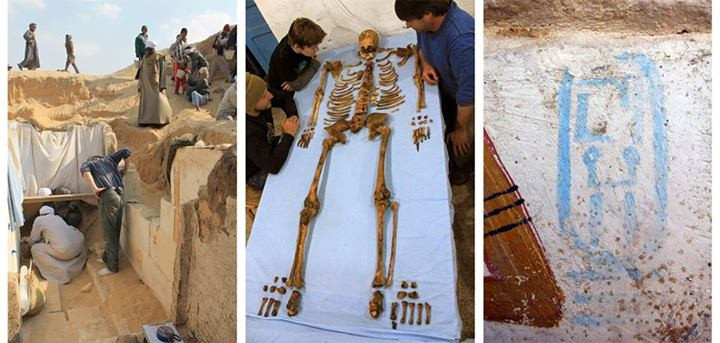Tomb of an Unknown Pharaoh and a Forgotten Dynasty Discovered in Egypt

Archaeologists in Egypt have discovered a tomb they say could be of a previously unknown pharaoh named Woseribre Senebkay, who reigned over ancient Egypt between 1650 and 1600 BC.
The crypt was found at the southern Egyptian site of Abydos, about 500km south of Cairo, by an excavation team from the Penn Museum, University of Pennsylvania.
King Senebkay's tomb was uncovered close to a larger royal tomb of another pharaoh, Sobekhotep (1780 BC), the first king of Egypt's 13th Dynasty. .
Inside the tomb, skeletal remains of King Senebkay were found. Archaeologists said that though the pharaoh was mummified, his tomb was robbed badly.
"Senebkay's tomb was badly plundered by ancient tomb robbers who had ripped apart the king's mummy as well as stripped the pharaoh's tomb equipment of its gilded surfaces," archaeologists said in a statement.
Bone analysis of the pharaoh's skeleton indicated that Senebkay was 5'10'' tall and died aged 40.

Forgotten Dynasty Revealed
According to archaeologists, the discovery of King Senebkay proves the existence of an independent Abydos dynasty, which was first hypothesised by Egyptologist K. Ryholt in 1997.
The evidence for it is about 16 royal tombs spanning the period 1650 to1600 BC and found alongside the burial of Senebkay, who appears to be one of the earliest kings of the Abydos Dynasty.
"It's exciting to find not just the tomb of one previously unknown pharaoh, but the necropolis of an entire forgotten dynasty," the excavatiom team leader, Dr. Josef Wegner, said.
"Continued work in the royal tombs of the Abydos Dynasty promises to shed new light on the political history and society of an important but poorly understood era of Ancient Egypt," he added.
Abydos Dynasty existed in the southern part of Middle Egypt between the larger and well-thriving kingdoms of Thebes and the Hyksos in northern Egypt.
Senebkay's tomb also provides evidence that Abydos Dynasty had comparatively weak economy because objects that had been extracted from previous tombs and reused in a later tomb were found.
"An important discovery was the badly decayed remains of Senebkay's canopic chest. This chest was made of cedar wood that had been reused from the nearby tomb of Sobekhotep I," the archaeologists noted, adding that such reuse of objects from the nearby tomb suggests the limited resources and isolated economic situation of the Abydos Kingdom.
© Copyright IBTimes 2025. All rights reserved.





















